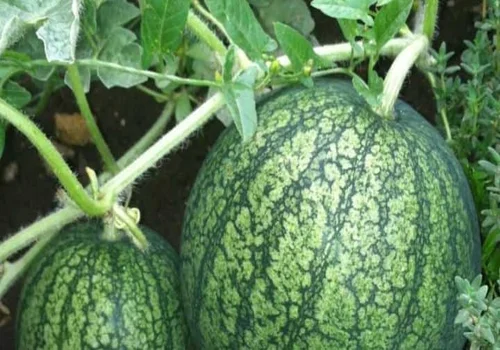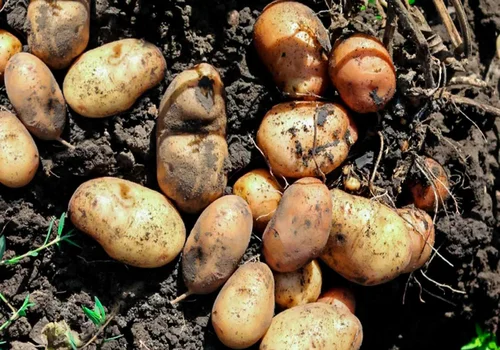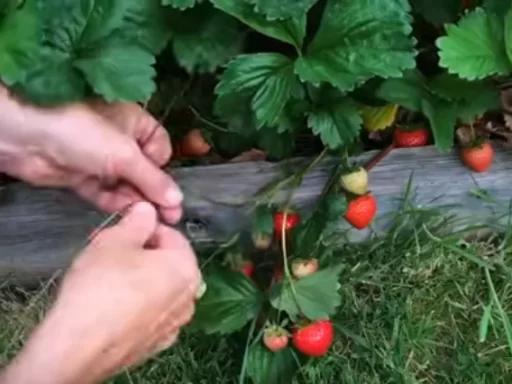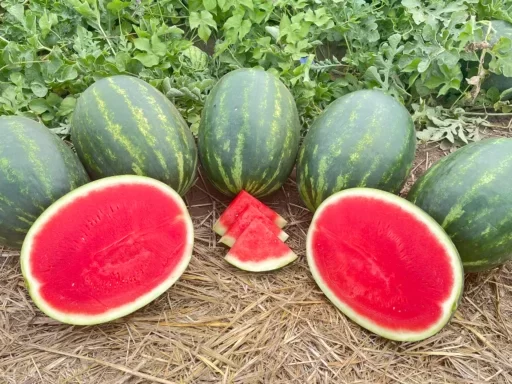Homegrown carrots are a delightful addition to any garden, offering crisp, crunchy satisfaction straight from your backyard. With a remarkable variety of carrots available, including some that you won’t find in your local grocery store, growing your own can add an exciting twist to your meals. From vibrant purple carrots to classic orange ones, the diverse shapes and colors can enhance both your plate and your culinary creativity. In this comprehensive guide, we’ll cover everything you need to know about successfully growing carrots at home, from selecting the right varieties to the best planting and harvesting techniques.
The Many Varieties of Carrots
Carrots come in an array of colors, sizes, and shapes, each with its unique flavor and texture. While orange carrots are the most well-known, you can also find red, yellow, white, and even purple carrots. These colorful roots can elevate the aesthetics of any dish while providing a range of nutrients.
Carrots can be categorized by their shape:
- Stump-rooted Carrots: Ideal for container gardening and shallow soils.
- Chantenay Carrots: Cone-shaped and perfect for rocky or clay soils.
- Imperator Carrots: The classic long carrot, which can grow up to 10 inches or more.
Additionally, carrots are classified into early and main crop types. Early varieties are sown in spring and yield tender, sweet roots, while main crop varieties are planted later for larger harvests that can be stored through the autumn and winter months.
Choosing the Right Varieties
When selecting carrot seeds, explore catalogs and websites of seed companies to find varieties that excite you. Look for award-winning seeds, as these are typically reliable and perform well.
For best results, it’s advisable to sow carrots directly into the soil where they will grow. This is because carrots don’t transplant well; plug trays of carrots might not thrive and can be quite costly.
Ideal Growing Conditions
Carrots thrive in sunny locations with well-drained, crumbly soil free from stones and debris. Prior to planting, ensure the soil is prepared properly, as overly rich or recently manured soil can lead to misshapen roots. Aim for a crumbly texture, which helps the roots grow long and straight.
Preparing the Soil
The soil should be prepared in advance, ideally enriched with compost during the fall. This ensures that when planting season arrives, your soil is nutrient-rich and ready for sowing. Carrots prefer a soil pH between 6.0 and 6.8, so conducting a soil test can help determine if any amendments are needed.
Sowing Carrots
The best time to sow carrots is early spring, about a month before the last frost date. If you’re using a greenhouse or cloches, you can plant them even earlier. Make shallow rows approximately half an inch deep and space them about 8 to 10 inches apart. Since carrot seeds are tiny, take care when sowing to ensure they are spaced about half an inch apart.
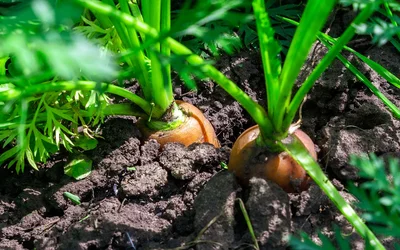
For easier sowing, consider mixing seeds with sand to achieve better spacing or use pelleted seeds or seed tapes for convenience. These methods can simplify the sowing process and help prevent overcrowding.
Germination and Maintenance
Carrot seeds can take up to three weeks to germinate, especially in cooler weather. It’s essential to keep the soil consistently moist during this time. This may require daily watering in warm weather.
One effective method to maintain soil moisture and temperature is to cover the sowing area with wooden planks or burlap. As soon as you notice seedlings pushing through the soil, remove the cover to allow them access to sunlight.
In hotter climates, sowing should ideally occur in the cooler months, such as from autumn to early spring. To ensure a continuous supply of fresh carrots, consider making new sowings every three to four weeks.
Thinning Seedlings
Once your seedlings begin to emerge, thinning is crucial for preventing overcrowding. Begin by thinning to about an inch apart, then further to two to three inches as they grow. Thinned seedlings can be added to salads, minimizing waste and adding a fresh, carroty flavor to your dishes.
When thinning, it’s essential to do so carefully. The scent released from bruised foliage can attract carrot flies, which can wreak havoc on your crop. Thin seedlings on calm days, preferably in the evening when the flies are less active, and consider watering the area afterward to reduce the scent.
Protecting Your Crop
Carrot flies can be a significant threat, especially during summer. To protect your carrots, consider covering them with garden fleece or insect mesh. Additionally, rotating your carrot crops each year can help prevent pests from establishing themselves in your garden.
Another natural deterrent is planting carrots alongside members of the allium family, such as garlic or onions. The different scents and foliage can confuse pests and help protect your carrots.
Watering and Nutrient Needs
As your carrots establish themselves, they will require less frequent watering. Encourage deeper root growth by watering less often, allowing the roots to reach down for moisture. However, during prolonged dry spells, give them a thorough soaking to ensure they receive adequate hydration.
Fertilization
Carrots require balanced nutrients to thrive. Consider using a slow-release fertilizer at the time of planting and follow up with additional organic amendments if necessary. Monitor your soil health, as carrots can benefit from moderate levels of nitrogen and phosphorus.
Harvesting Your Carrots
Knowing when to harvest your carrots can be challenging, especially for novice growers. Look for lush foliage, which often indicates healthy roots below. You can gently brush away the soil to check the shoulders of the roots, but if you’re uncertain, simply harvest a few of the largest carrots first, leaving others to grow longer.
Carrots can typically be harvested in the late summer or early autumn, depending on the variety you’ve planted. After harvesting, store them in a cool, dark place to prolong their freshness.
Conclusion
Growing your own carrots can be a rewarding experience, providing not only delicious vegetables but also the joy of nurturing plants from seed to harvest. With a little planning and care, you can enjoy a colorful array of carrots that elevate your culinary creations. Embrace the process and relish the fruits of your labor—homegrown carrots are a delight you won’t soon forget!
Frequently Asked Questions
- What are the best carrot varieties for home gardening?
- Some popular varieties include Nantes, Chantenay, and Imperator. Purple and white carrots can also add unique colors to your garden.
- How long does it take for carrot seeds to germinate?
- Carrot seeds can take up to three weeks to germinate, depending on temperature and moisture levels.
- What is the ideal soil for growing carrots?
- Carrots prefer loose, well-drained, sandy loam soil with a pH of 6.0 to 6.8.
- How can I protect my carrots from pests?
- Cover your carrots with garden fleece or insect mesh, and consider planting companion crops like garlic or onions to deter carrot flies.
- When is the best time to sow carrot seeds?
- The ideal time to sow carrot seeds is early spring, about a month before the last frost date.
- What should I do if my carrots are misshapen?
- Misshapen carrots can result from overcrowding, poor soil conditions, or inadequate watering. Ensure proper spacing and soil preparation to minimize this issue.
- Can I grow carrots in containers?
- Yes, carrots can be successfully grown in containers, especially stump-rooted varieties. Just ensure the container is deep enough for the roots to grow.

